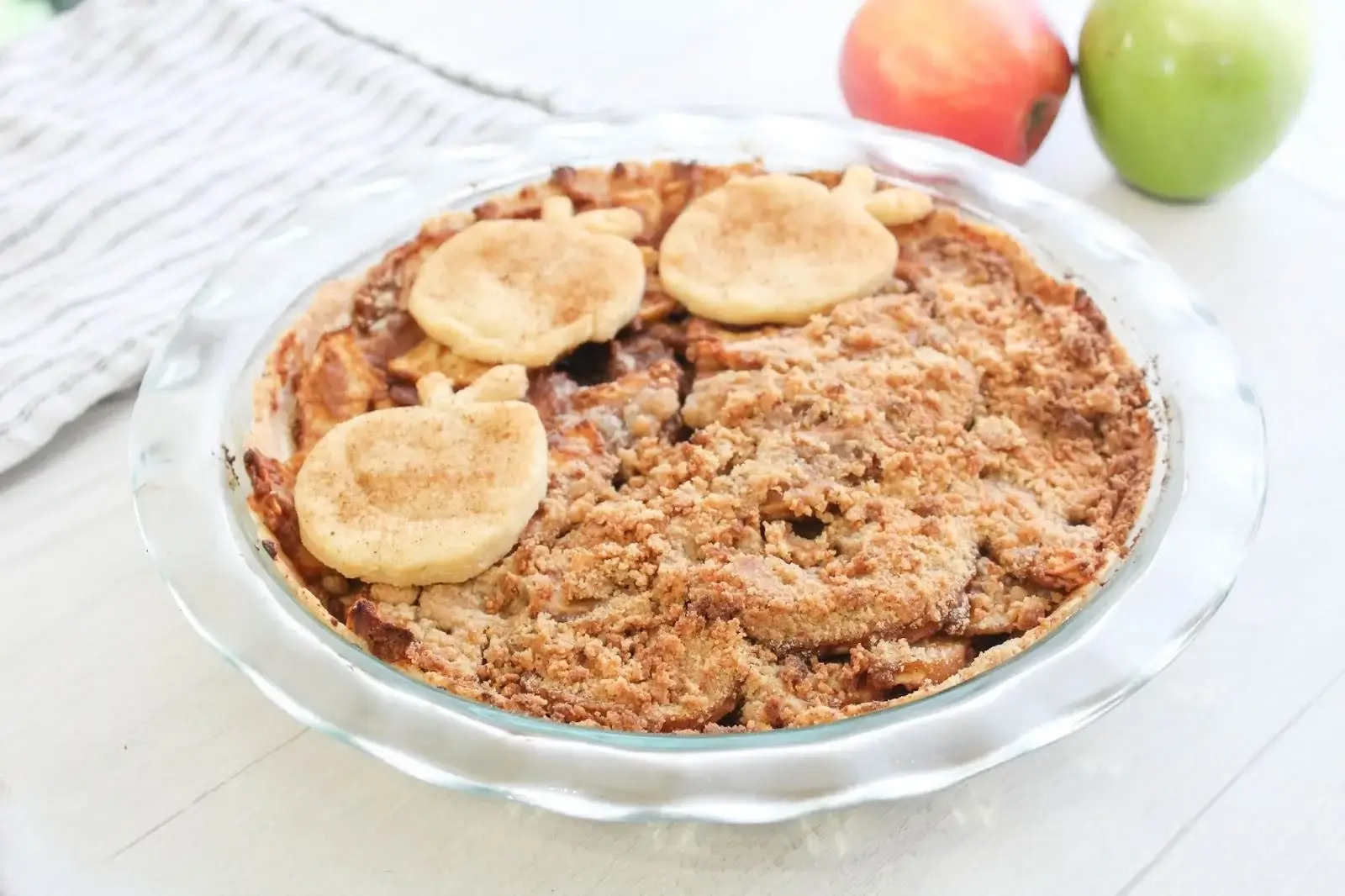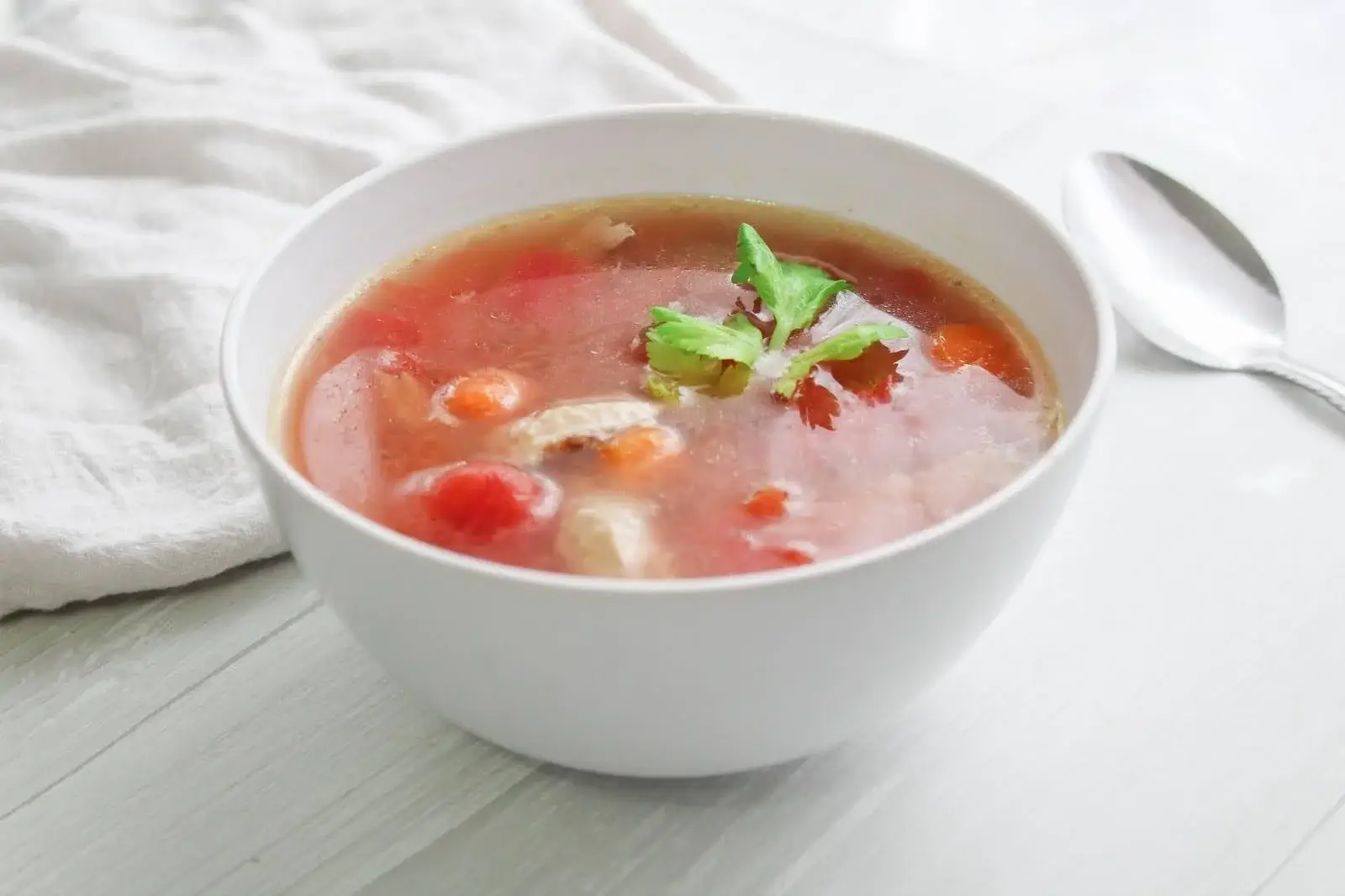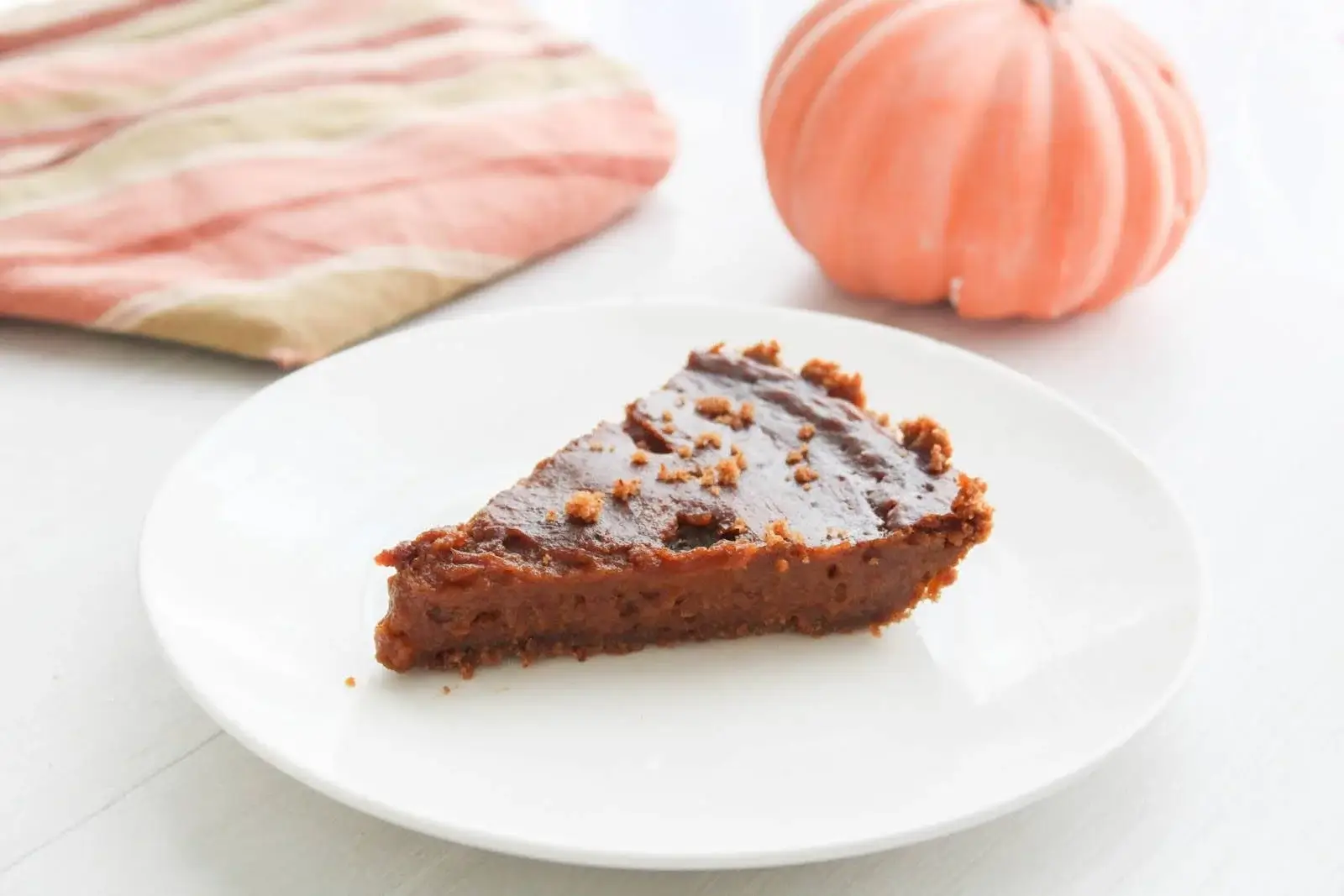My Gluten Free Soft Pretzels are reminiscent of those you’d find at the shopping mall! They’re soft, fluffy, and perfectly salted. You’d never guess they’re healthy!
My sister Samantha, aka “Sam,” made these for family holidays and gatherings for many years. When we moved to Georgia, I realized I needed to get this recipe and continue serving it during these occasions. This is our adaptation to make it allergy-friendly, and we serve it on many holidays.
When you approach healthy eating with an abundance mindset, you’ll learn there’s nothing you can’t enjoy. You just have to make a few savvy ingredient swaps. These pretzels will be a staple at your table for years to come.
Table of Contents:
The 411 on Grains
Grains are a hot topic, and everyone has a different opinion. Many health enthusiasts suggest eliminating grains from your diet. God created grains, leading me to believe that He intended us to consume them! Here’s some must-know information to help you navigate this area with wisdom.
Growing Processes Have Evolved
Grains have been consumed since Bible times, but those grains would be unrecognizable to us. The people living at that time had a standard of purity that we don’t have today. There were no pesticides, the air was unpolluted, and there certainly wasn’t the technology to modify food.
Because their harvesting processes were so basic, people could eat grains with fewer health issues. This doesn’t mean that present-day grains are off-limits, but we need to be aware of what we consume.
Grains Used to Be Sprouted
Sprouted or soaked grains benefit your body in many ways. Historically, this was a natural occurrence because storage procedures were different. Instead of sealing grains away, they were left in the elements, which caused them to sprout.
These days, sprouted grains aren’t the default option, but you can still find many products, including sprouted bread. Sprouting lowers the carb count in grains by eliminating starches, which makes it a popular choice for many low-glycemic diets (1). Sprouted grains are easier for the body to digest as they contain lower levels of gluten (2).
Balance is Key
Though we encourage healthy grains, there is such a thing as gluten overload. If you have sensitivities to gluten in the standard American diet (white flour, white rice, etc.), you may be able to enjoy these things in a new way.
You should note that sensitivities are entirely different than life-threatening allergies, which you should always take seriously.
If regular rice upsets your stomach, try brown or basmati rice. If white flour is the issue, purchase high-quality gluten-free or spelt flour. Ancient grains such as quinoa and oats are fantastic options as well.
Get creative. Many recipes (including this one!) use healthy flours.
Allergy-Friendly Pretzel Ingredients
These tasty, gluten-free soft pretzels don’t require any fancy ingredients. In fact, if you’ve started implementing the changes we mention in the Essential Oils Diet, you already have many of these things! Here’s what you need to add to your shopping cart.
Gluten-Free All-Purpose Flour: A high-quality flour makes healthy baking a breeze! I recommend using a cup-for-cup blend because it’s specially formulated for baking pretzels, bread, etc. Some brands require you to add an additional ingredient that you might not be comfortable with, so be sure to check your label!
Organic Coconut Sugar: Every soft pretzel recipe needs a hint of sweetness. I love adding coconut sugar to my baked goods because it has a deep flavor that mimics brown sugar. This low-glycemic sweetener is readily available at most well-stocked grocery stores.
Pink Himalayan Salt or Sea Salt: Traditional table salt undergoes a rigorous harvesting process that strips it of necessary nutrients. I recommend using Colima sea salt as it’s hand-harvested, which leaves the good stuff intact. Plus, it tastes great and adds a gourmet flair to any recipe.
I also have used pink Himalayan salt, flaked sea salt, or Kosher salt so you have some options when it comes to your salt preferences.
Baking Soda: Every great pretzel is chewy on the inside and crisp on the outside. Poaching the pretzel makes this happen, and this simple step is vital to the process. Adding baking soda to your poaching water creates the softest pretzels.
Grass-Fed Organic Sea-Salted Butter: In years past, diet culture eliminated butter in favor of margarine. Recent studies have shown that you should actually avoid margarine! (3) In moderation, butter is good for your body.
Make Gluten-Free Soft Pretzels
Homemade pretzels look gourmet but aren’t hard to make. I like to get the kids involved with creating the pretzel shapes. It’s always fun to see their creations!

Sam’s Gluten-Free Soft Pretzels (With Gluten-Friendly Option)
Servings
Ingredients
- Unrefined (non propellant) coconut oil, avocado oil OR olive oil cooking spray for greasing the pan, hands, and other working surfaces to prevent sticking throughout
- 2 cups purified OR distilled warm water (about 110ºF)
- 1 tablespoon organic coconut sugar
- 1 tablespoon active dry yeast
- 5½-6 cups gluten-free all-purpose flour*
- 1 tablespoon pink Himalayan salt OR sea salt, ground
- Purified OR distilled water
- 2 tablespoons baking soda
- 3 large pasture-raised organic eggs, whisked OR 2 tablespoons grass-fed organic sea-salted butter OR 2 tablespoons coconut oil, extra-virgin AND unrefined AND a pinch pink Himalayan salt or sea salt, ground, melted
- Coarse sea salt, for topping pretzels
Supplies
- Shallow pans (I use two at a time and use my largest fry pans, so you can get more done)
- Slotted tuner (metal)
Instructions
- Place the warm water and coconut sugar into the bowl of a stand mixer, and stir to dissolve. Sprinkle with yeast; let stand for 5 minutes, or until foamy. Using the dough hook attachment, beat 1 cup of flour into the yeast mixture at low speed until combined. Add 4 more cups of flour; mix until combined, about 30 seconds. Raise speed to medium-low; continue beating until dough pulls away from the sides of the bowl, about 1½ minutes. Add ½ cup flour; knead on low speed 1 minute more. If the dough is still wet and sticky, add ½ cup more flour; knead until combined, about 30 seconds.
- Turn out the dough onto a lightly oiled and floured work surface, and knead until smooth, about 10 times. I also oil my hands to keep them from getting covered in the sticky gluten-free dough! Transfer the dough to a lightly oiled bowl. Cover with a kitchen towel, and let rise in a warm place until the dough has doubled in bulk, about 1 hour. Preheat the oven to 450ºF. Lightly coat two baking sheets with cooking spray; set aside. Punch down the dough to remove air pockets. Turn out onto a lightly oiled and floured work surface. Oil your hands if needed to prevent sticking. Knead once or twice and divide into 16 equal pieces (use a dough cutter to help make even divisions). Cover the dough with plastic wrap.
- Thoroughly oil your dough piles and cookie sheets/jelly roll pans so the pretzels will hold their shape. Roll out dough, one piece at a time, into 12-18-inch long strips. Twist into pretzel shapes and place on greased parchment paper covered baking sheets. Cover with a kitchen towel. Place on top of the preheating oven and let rise for 15 minutes. Spray each pretzel with unrefined (non propellant) coconut oil, avocado oil OR olive oil cooking spray to prevent cracking, and if cracks begin to appear, compress the dough to minimize cracking.
- Meanwhile, fill a large shallow pan with 2 inches of water, and bring to a boil. I like to use two of my widest, shallow pans so I can cook two per pan at a time and do four at a time. Add baking soda to each pan. Reduce to a simmer, and carefully drop two pretzels per pan into the water. Poach for 1 minute. I use two kitchen timers, one for one pan and one for the other. Use a slotted spoon to return the pretzels to the baking sheet. Continue until all pretzels are poached.
- Brush pretzels with the whisked eggs or melted butter and sprinkle with coarse salt. Bake pretzels until golden brown, 12-15 minutes.
- Remove from the oven and let cool on a wire rack. Pretzels will keep at room temperature for up to 2 days. Do not store them in a covered container. Serve warm or at room temperature. This is a great make-ahead recipe. Simply cook and cool completely, store in the freezer in a 9 x 13-inch pan layered with greased parchment paper or a large Ziploc bag layered with greased parchment paper. I prefer flash-freezing the pretzels on greased parchment paper so they lie flat, then transferring them to containers. Thaw the night before, and warm them up (covered) before serving.
Notes
Step One: Make Pretzel Dough
Place the warm water and coconut sugar into the bowl of a stand mixer, and stir to dissolve. Sprinkle with yeast; let stand for 5 minutes, or until foamy. Using the dough hook attachment, beat 1 cup of flour into the yeast mixture at low speed until combined. Add 4 more cups of flour; mix until combined, about 30 seconds.
Raise speed to medium-low; continue beating until dough pulls away from the sides of the bowl, about 1½ minutes. Add ½ cup flour; knead on low speed 1 minute more. If the dough is still wet and sticky, add ½ cup more flour; knead until combined, about 30 seconds.
Step Two: Begin the Rising Process
Turn out the dough onto a lightly oiled and floured work surface and knead until smooth, about 10 times. I also oil my hands to prevent them from getting covered in the sticky gluten-free dough! Transfer the dough to a lightly oiled bowl. Cover with a kitchen towel and let rise in a warm place until the dough has doubled in bulk, about 1 hour.
Step Three: Form the Pretzel Shapes
Preheat the oven to 450ºF. Lightly coat two baking sheets with cooking spray; set aside. Punch down the dough to remove air pockets. Turn out onto a lightly oiled and floured work surface. Oil your hands if needed to prevent sticking. Knead once or twice and divide into 16 equal pieces (use a dough cutter to help make even divisions). Cover the dough with plastic wrap.
Thoroughly oil your dough piles and cookie sheets/jelly roll pans so the pretzels will hold their shape. Roll out dough, one piece at a time, into 12-18-inch long strips. Twist into pretzel shapes and place on greased parchment paper covered baking sheets. Cover with a kitchen towel. Place on top of the preheating oven and let rise for 15 minutes.
Spray each pretzel with unrefined (non propellant) coconut oil, avocado oil OR olive oil cooking spray to prevent cracking, and if cracks begin to appear, compress the dough to minimize cracking.
Ultimately, if you end up with pretzel pieces, cook them as they will still taste delicious. Consider them pretzel nuggets!
Step Four: Poach the Pretzels
Meanwhile, fill a large shallow pan with 2 inches of water, and bring to a boil. I like to use two of my widest, shallow pans so I can cook two per pan at a time and do four at a time. Add baking soda to each pan. Reduce to a simmer, and carefully drop two pretzels per pan into the water. Poach for 1 minute.
I use two kitchen timers, one for one pan and one for the other. Use a slotted spoon to return the pretzels to the baking sheet. Continue until all pretzels are poached.
Step Five: Add Toppings
Brush pretzels with the whisked eggs or melted butter and sprinkle with coarse salt. Bake pretzels until golden brown, 12-15 minutes.
Remove from the oven and let cool on a wire rack. Pretzels will keep at room temperature for up to 2 days. Do not store them in a covered container. Serve warm or at room temperature. This is a great make-ahead recipe. Simply cook and cool completely, store in the freezer in a 9 x 13-inch pan layered with greased parchment paper or a large Ziploc bag layered with greased parchment paper. I prefer flash-freezing the pretzels on greased parchment paper so they lie flat, then transferring them to containers. Thaw the night before, and warm them up (covered) before serving.
Gluten-Friendly Soft Pretzel Snack Variation
Want more healthy pretzel options? To make “Gluten-Friendly” pretzels, use 3 cups organic spelt flour AND 2½-3 cups gluten-free all-purpose flour.
- https://pubmed.ncbi.nlm.nih.gov/2692609/
- https://pubmed.ncbi.nlm.nih.gov/17497874/
- https://pubmed.ncbi.nlm.nih.gov/9229205/
















